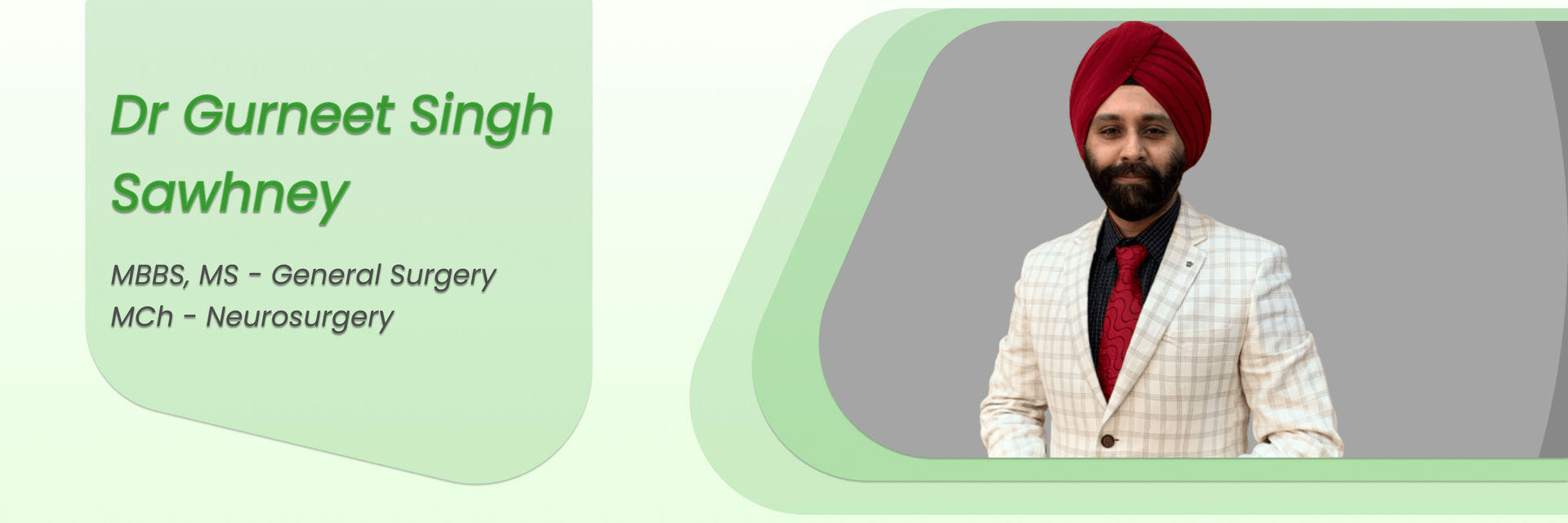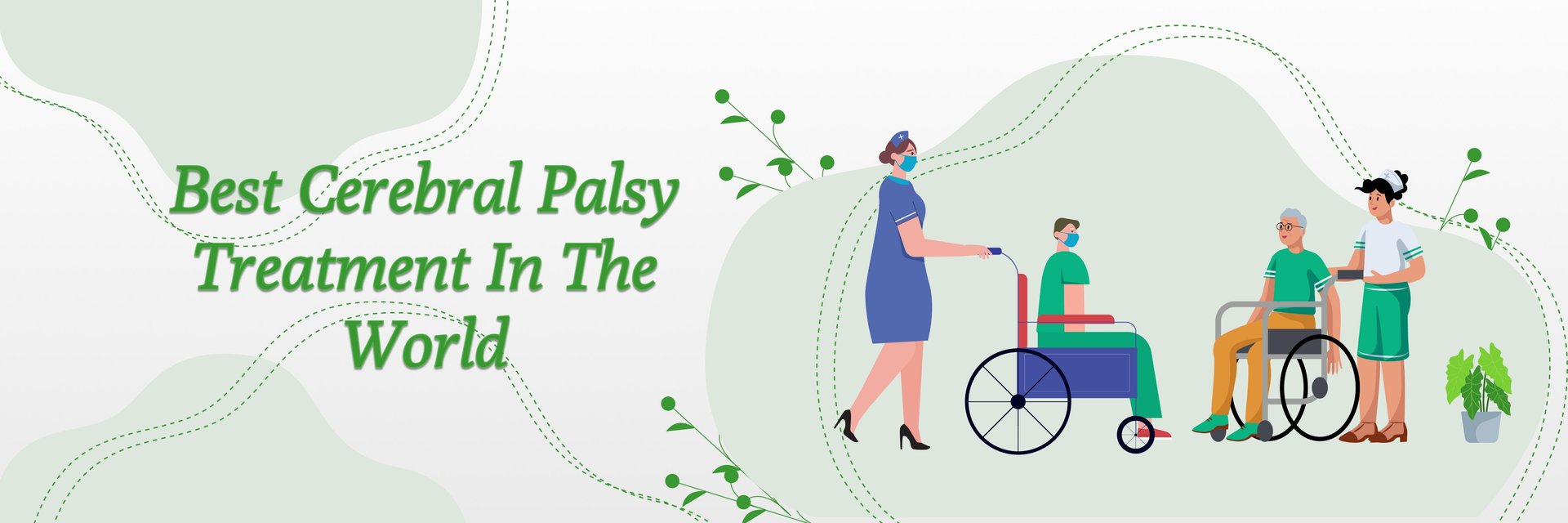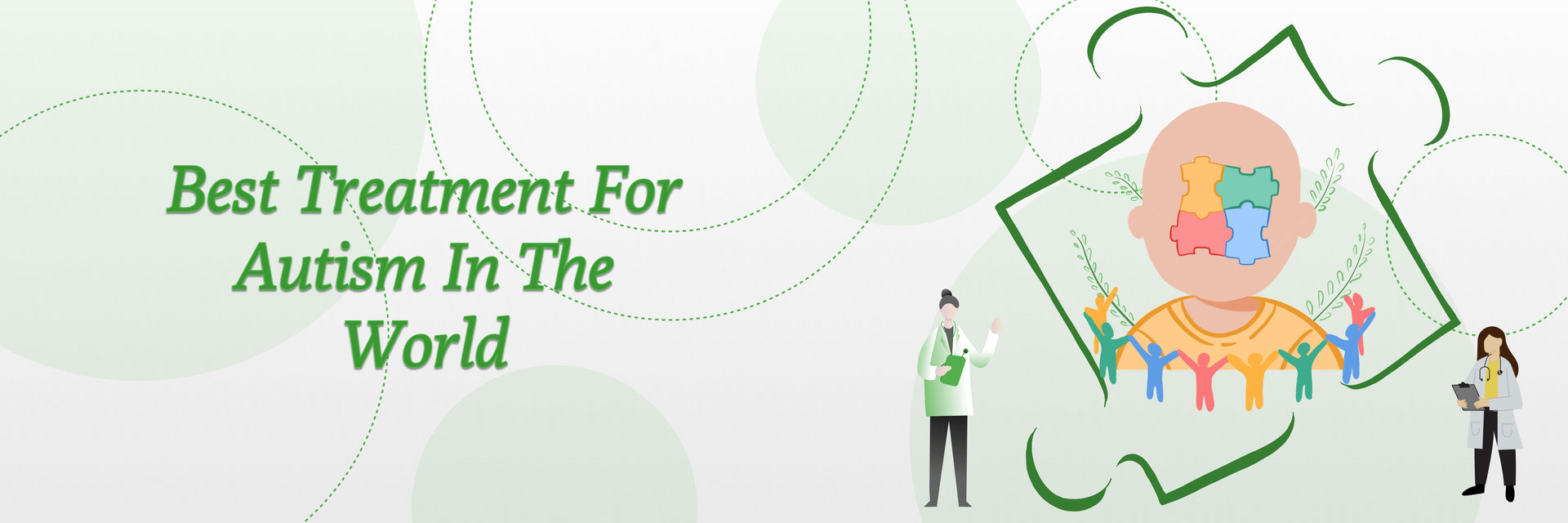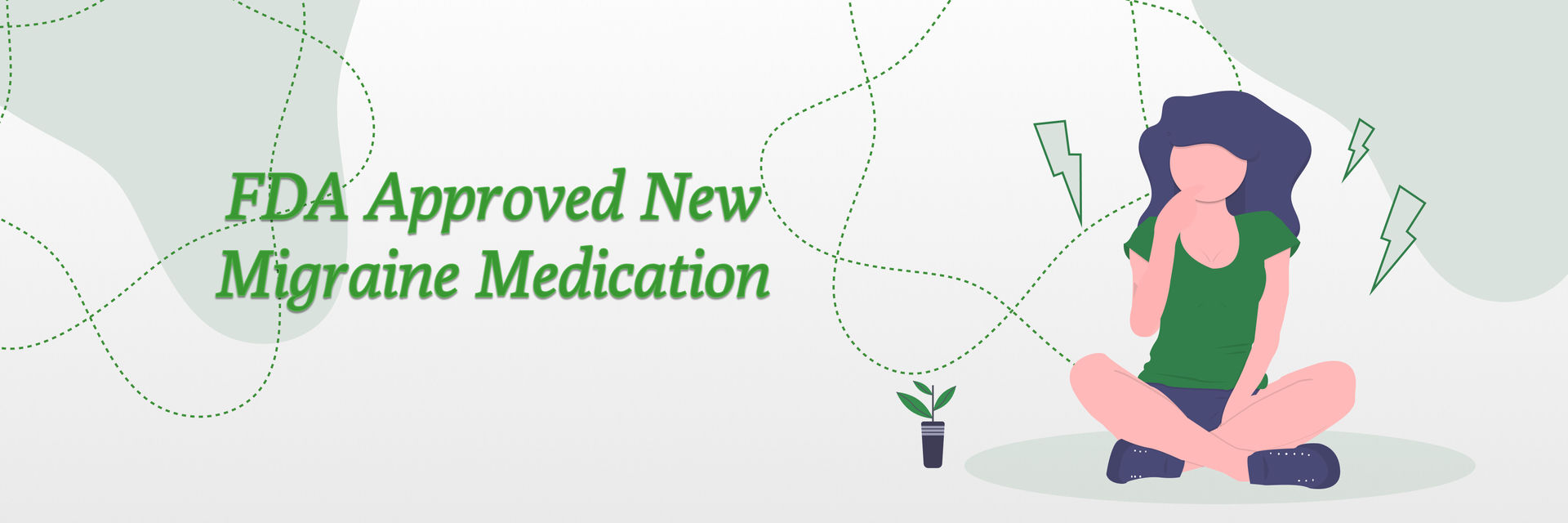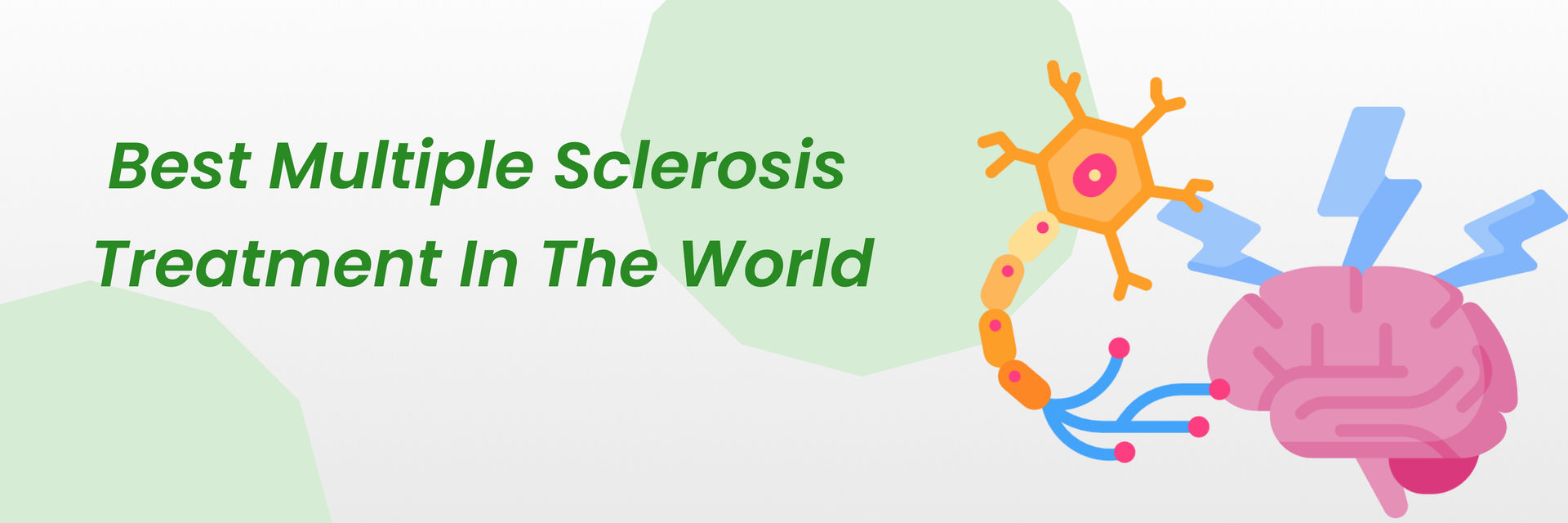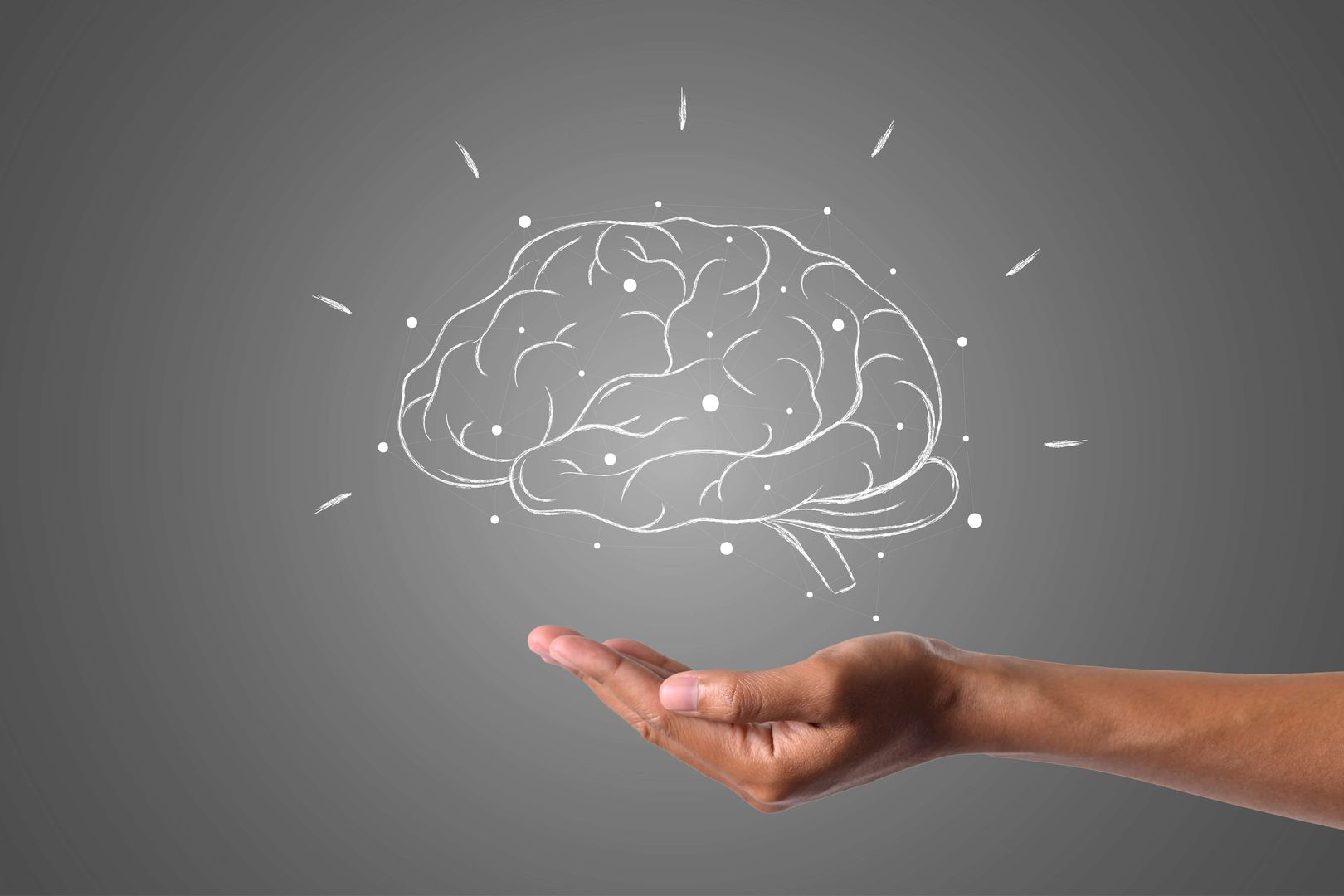Overview
Stem Cell Therapy for Brain Injury is making a significant difference in recovery. Studies show that about 75% of patients experience improvement in thinking and movement skills after this therapy. This innovative treatment harnesses the healing power of stem cells to repair damage where other therapies might not be as effective. With over 2 million people sustaining brain injuries every year in the U.S., this therapy offers a ray of hope for many. It not only enhances lives with new science and patient-focused care but also sets new standards for treating brain injuries.
Dr. Pradeep Mahajan, a renowned expert in regenerative medicine, emphasizes the transformative potential of stem cell therapy for brain injury patients. According to Dr. Mahajan, "Stem cell therapy provides a unique approach to healing that traditional treatments cannot offer. By focusing on the body's natural repair mechanisms, we can achieve remarkable outcomes in terms of cognitive and motor skill recovery." Dr. Mahajan's insights highlight the therapy's role in revolutionizing brain injury treatment, offering renewed hope and improved quality of life for patients. His dedication to patient-centric care and advanced scientific methods underscores the therapy's success and growing adoption in medical practice.
Brain injuries are generally caused by some form of violence like:
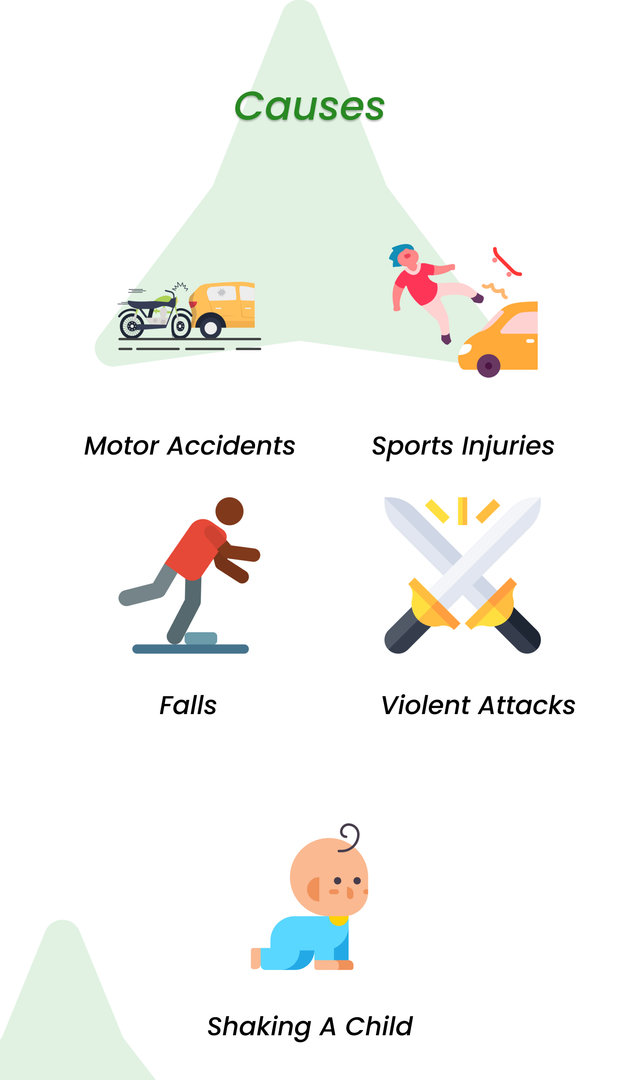
Symptoms
Brain injuries can manifest with a variety of symptoms, as each one is unique. However, you can keep an eye out for the falling signs:
| Cognitive symptoms |
|
| Motor deficits |
|
| Sensory issues |
|
| Communication problems |
|
| Traumatic Epilepsy |
|
Experiencing symptoms? Your health is too important to ignore – schedule your appointment now for a thorough evaluation and personalized care.
Types
What are the different types of brain injuries out there? While several different classifications exist, the most basic one is as follows:
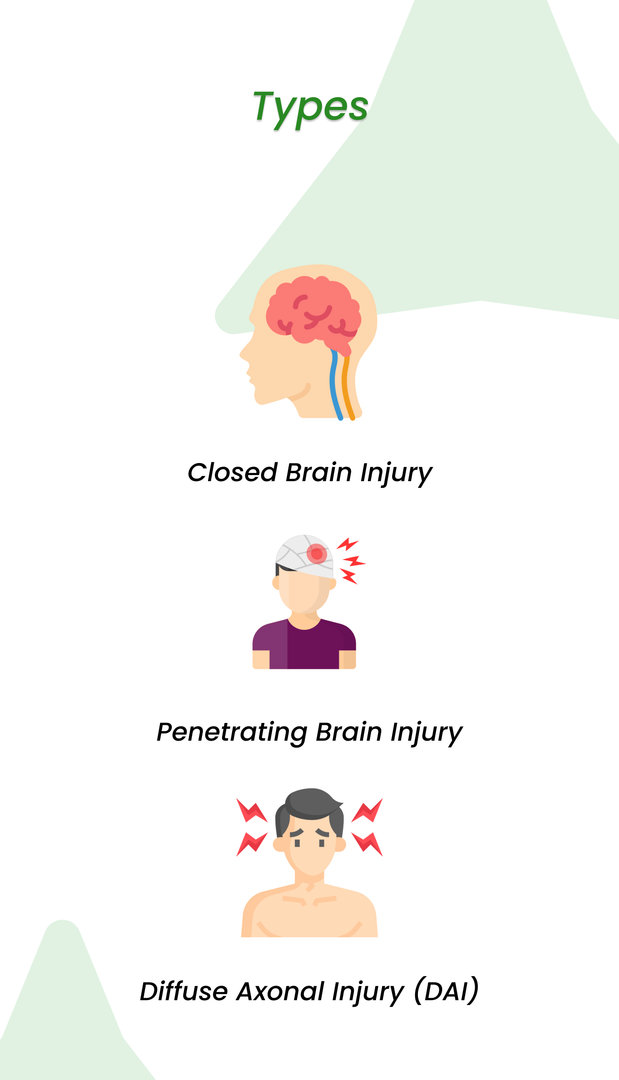
- Closed Brain Injury: There is no break in the skull, but bruising and tearing of brain tissue and blood vessels occur.
- Penetrating Brain Injury: This is seen when there is a break in the skull. It is usually seen with bullet wounds.
- Diffuse Axonal Injury (DAI): It is the tearing of the brain’s nerve fibers, which happens when the brain shifts and rotates in the skull during the injury. It almost definitely results in a coma.
Stem Cell Treatment for Brain Injury

We are sure you’re curious to know more about this new buzzword.
But first, let’s get some basic knowledge of stem cell treatment.
What is a stem cell?
There are many treatments available to treat brain injuries like Deep brain stimulation, stem cell therapy, Brain tumor surgery, TBI, etc. A stem cell is an undifferentiated cell that can form any kind of tissue in our bodies.
They can be extracted from our bone marrow, fatty tissue, and circulating blood. Scientists have also been studying the effectiveness of umbilical stem cells, which are extracted from frozen umbilical cords.
So, how do these cells help treat brain injuries, you ask?
Stem cells repair damaged cells and regenerate new cells.
When researchers discovered this property, they realized that stem cells would also be able to repair damaged nerve cells.
You see, when one gets a brain injury, the brain cells are damaged due to various reasons. It is challenging for nerve cells to heal, thus making brain injury a permanent disorder.
However, with this new treatment, studies have shown that the stem cells replace the damaged brain cells, eventually reversing brain injuries and their effects.
Is it FDA-Approved or Under Clinical Trials?
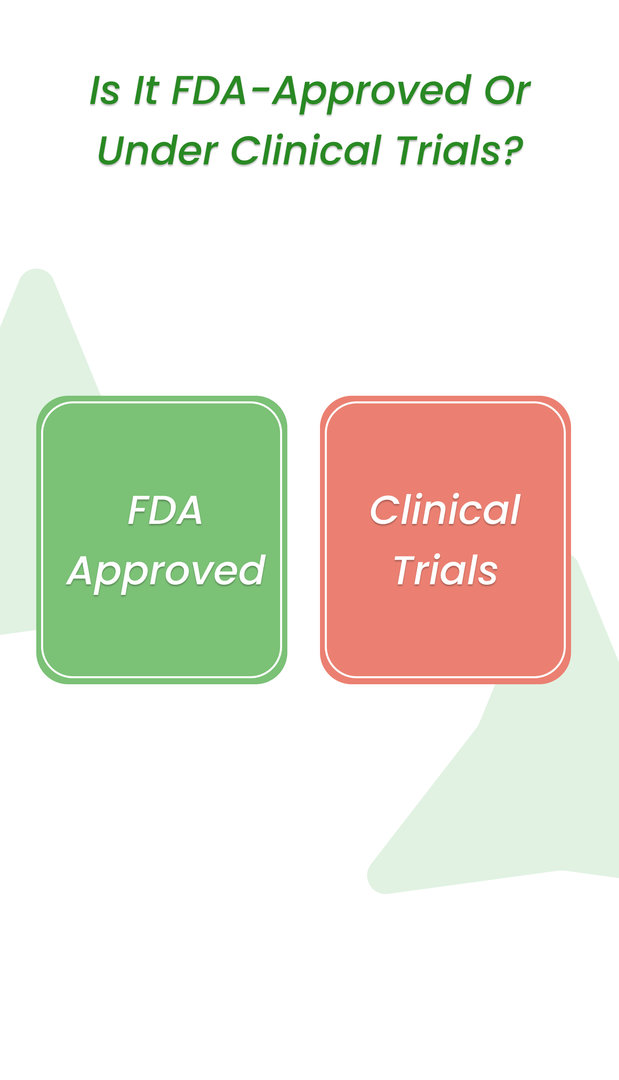
Stem cell therapy for brain injury is currently undergoing clinical trials on a large scale. While it’s not FDA-approved yet, the studies have been consistently showing promising results.
Curious about FDA approval or clinical trials? Take charge of your health and life – contact us today for personalized insights and explore the latest advancements in medical treatments.
Does Stem Cell Therapy Work for Brain Injury?
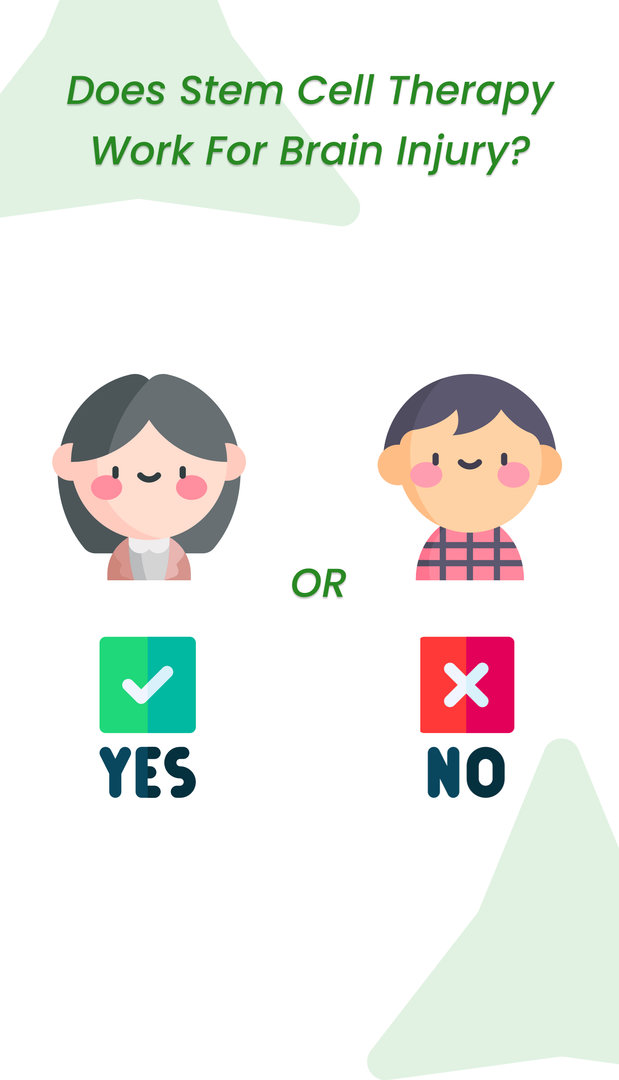
In a nutshell, yes, it does.
But this affirmative answer needs to be taken with a pinch of salt at this juncture. Studies have gone as far as to prove that stem cells can reverse brain damage.
However, clinical trials for stem cell treatment of brain injury are conducted in tightly controlled environments. At this stage, you will have to meet a rigid set of criteria to get the best results.
Still, you can be assured that while there might not be a complete reversal of brain damage, its repair certainly takes place.
How Does it Work?
Let’s see exactly how stem cells work their magic on injured brain tissue by understanding their functions.
- Stem cells have neurotrophic properties, which means they secrete growth factors that can form new nerve cells.
- These growth factors also encourage angiogenesis or the formation of new blood vessels.
You can see that stem cells work on the core issues of a brain injury. Not only do they form new cells, but they also reinstate blood flow to them, allowing the brain tissue to perform its functions again.
How much is Stem Cell Therapy for Brain Injury?
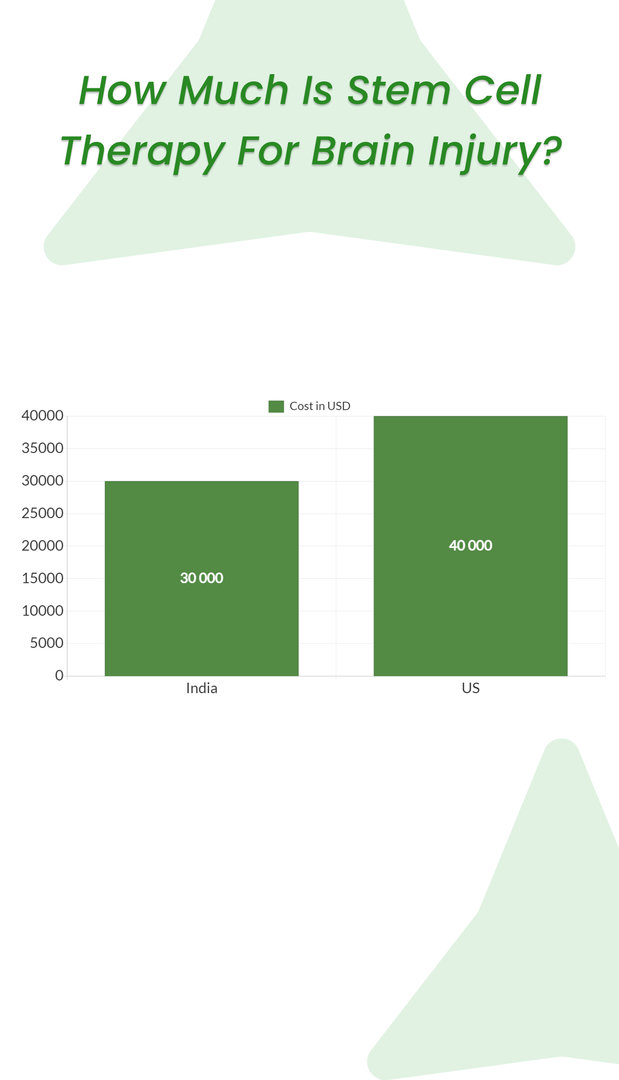
The cost of a stem cell transplant for brain injury depends on numerous factors like the severity of the injury, the location of treatment, the number of stem cell cycles required, and other additional care.
In India, stem cell treatment for traumatic brain injury costs 6,900 to 30,000 USD or 5 lakhs to 21.5 lakhs INR. This figure includes any hospital stay that might be required, as well as diagnostic tests needed before the treatment.
In comparison, stem cell for brain injury costs upwards of 40,000 USD in the US.
Eligibility of Stem Cell Therapy for Brain Injury

We are sure you’re wondering if you or your loved one even qualifies for stem cell transplant brain injury.
Each clinical trial has its own set of criteria, which are followed quite stringently.
Your consulting physician will be the best person to explain the details of this to you.
However, we have put together a general list of criteria you must meet to be eligible for stem cell therapy for traumatic brain injury.
- Younger patients are considered better candidates for this treatment.
- Stem cell brain injury should start immediately after the injury or within the first six months.
- The patient should not have a history of any kind of transplant.
Benefits and Risks of Stem Cell Therapy for Brain Injury

Like every medical procedure, stem cell treatment for traumatic brain injury also has a set of benefits and risks.
| Benefits | Risks |
|
|
|
|
|
|
Discover the Benefits and Risks of Stem Cell Therapy for Brain Injury. Take the first step to recovery – get in touch with us for personalized treatment information and support.
Did you know?
Stem cells repair and regenerate nerve cells, which is not possible with any other treatment for brain injury
Stem Cell Therapy for Different Types of Brain Injury
We know there are numerous types of brain injuries.
So, which type of brain injury can be treated by stem cell therapy?
Nearly all of them, as it turns out.
Stem cell therapy for hypoxia, anoxia, and traumatic brain injury is well-known. Apart from these, stem cells can also be used to treat hemorrhagic brain injury.
Procedure of Stem Cell Therapy for Brain Injury
It’s time to dive into the details of the procedure for stem cell therapy for traumatic brain injury.
After all, you deserve to know what you or your loved one will have to go through.
Traumatic brain injury stem cell therapy is a fairly simple procedure that can be divided into the following steps:
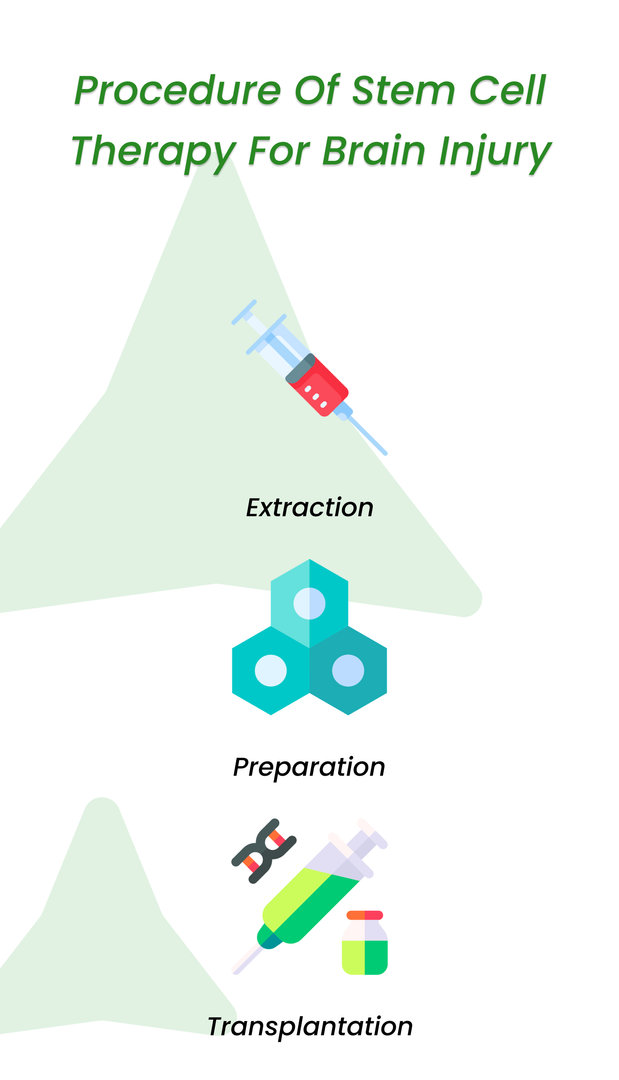
- Extraction: Stem cells are usually extracted from the bone marrow of the hip bone in most cases. In some studies, stem cells might be extracted from the fatty tissue of the abdomen via liposuction. This step usually takes just under two hours.
- Preparation: In this step, the extracted cells are taken to a stem cell laboratory. Here, the stem cells are separated by a technique called the ‘density gradient technique.’ Finally, a stem-cell-rich solution is prepared for transplantation. This process takes about three to four hours.
- Transplantation: The stem cells might be transplanted directly into the injured brain tissue. This is a surgical procedure and takes two to three hours. In some cases, though, the stem cells are transplanted directly into the cerebrospinal fluid through a spinal tap. This type of procedure only takes an hour.
As you can see, the whole cycle takes about eight to nine hours. However, to keep the patient comfortable, it is done over two days.
You’ll also be glad to know that it’s a painless procedure. Local or general anesthesia is given during the extraction and transplantation phase.
What to Expect After Stem Cell Therapy for Brain Injury?
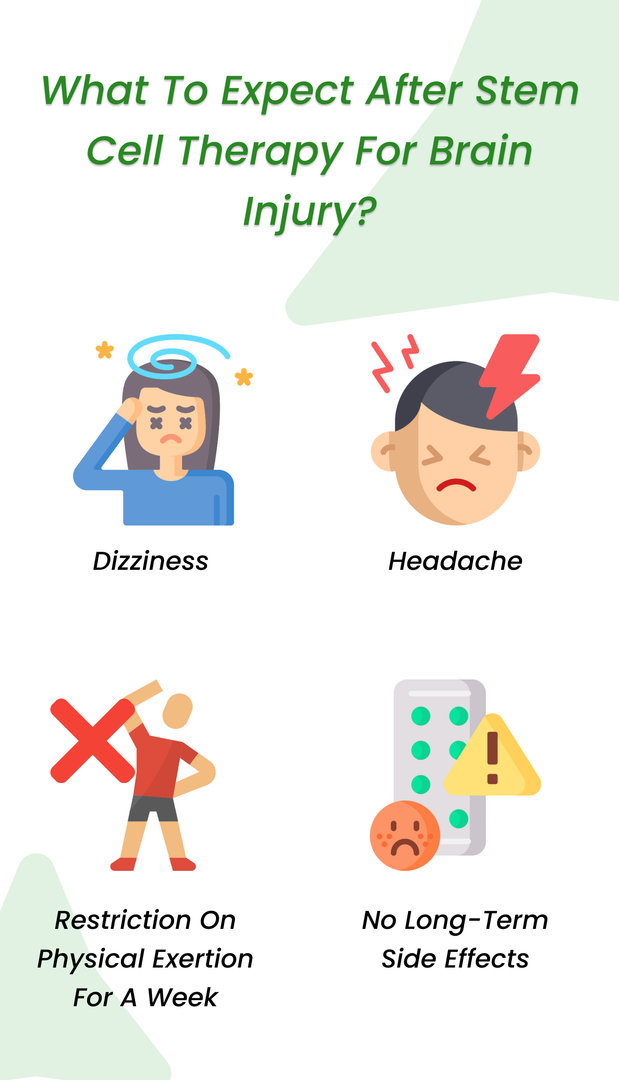
Immediately after stem cell transplantation, you might feel some dizziness or a headache which usually clears out in a few hours.
You will also be asked to restrict physical exertion for a week. In most cases, you will be under observation for four to six days, usually in a hospital.
On the bright side, no long-term side effects have been reported in over a decade of clinical trials. So, this procedure is completely safe.
You can expect to return to your regular activities (as much as your current condition allows you to, of course) in a week or ten days.
Other Treatments Needed with Stem Cell Therapy to Treat Brain Injury
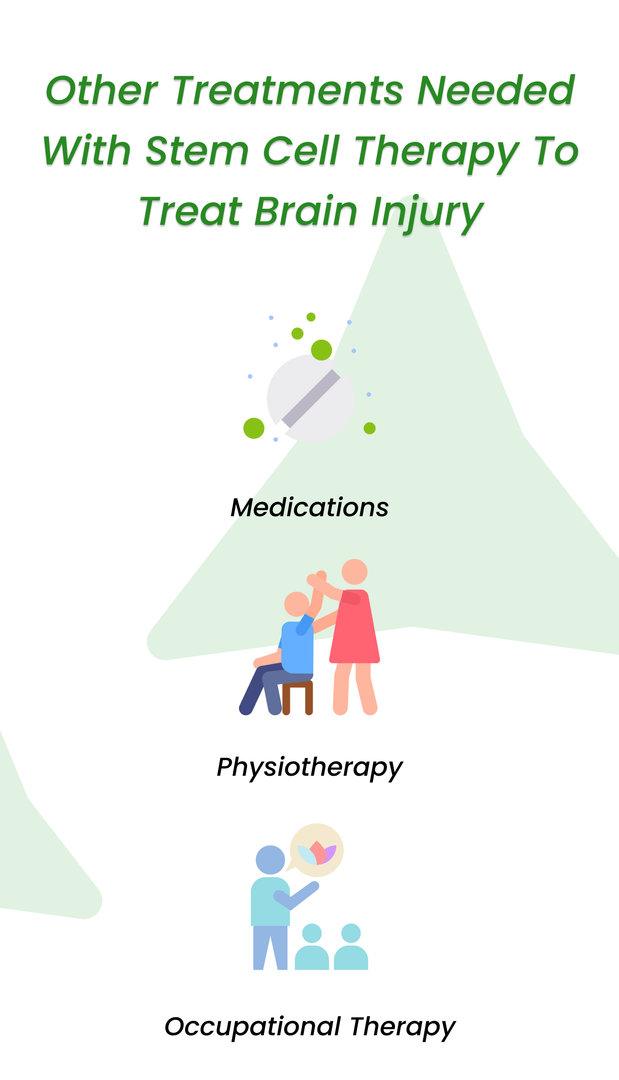
Researchers have recently started using stem cell therapy in conjunction with other treatments to enhance results. These protocols are still in their very initial stages and have a long way to go before we can get an effective treatment module.
At present, this research is being done on patients with mild brain injuries.
Medications are being combined with stem cell therapy to get optimum results.
After stem cell therapy, it is advisable to get physiotherapy and occupational therapy to get better and longer-lasting results.
Results of Stem Cell Therapy for Brain Injury

Results usually start appearing five weeks after stem cell treatment. You will continue to see them over the next six months. At this point, you can expect to see a significant improvement in mental functions, posture, limb control, speech, and sitting and standing balance.
There is an overall improvement in quality of life as well. All these improvements are evaluated with various scales like the SF-8 questionnaire and others.
These results usually last for twelve to fourteen months. Researchers are still trying to determine the best way to provide permanent results using stem cell treatment.
Explore the Results of Stem Cell Therapy for Brain Injury. Your well-being is our priority – call us today to book your appointment and discuss potential positive outcomes for your recovery.
Success Rate of Stem Cell Therapy for Brain Injury
Wasn’t this question on your mind since you started reading this article?
We have an answer for you.
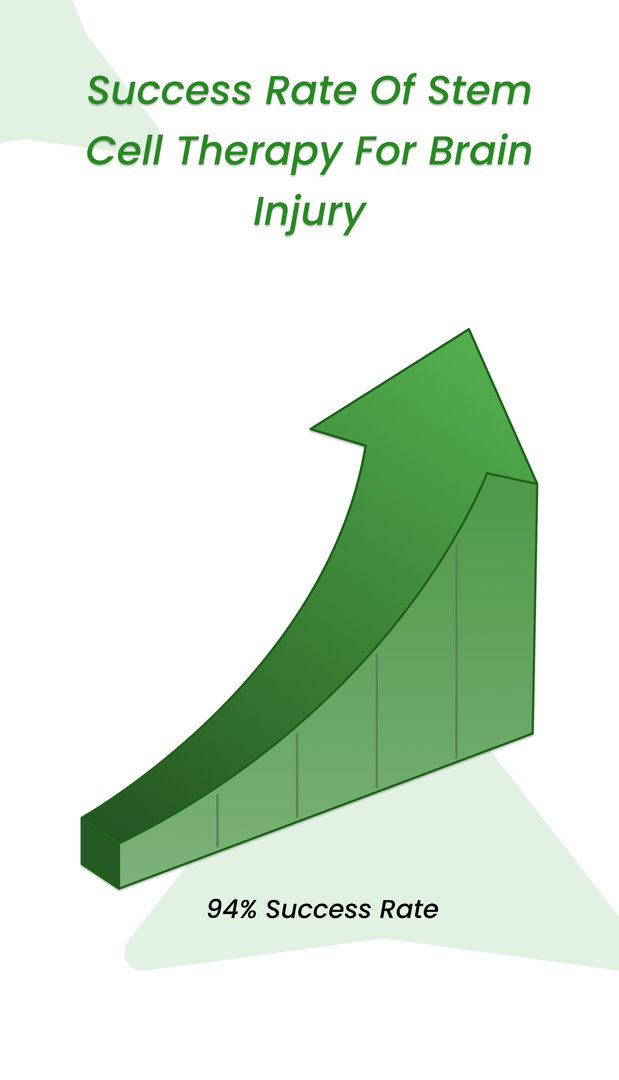
Although the success rate of stem cell therapy depends on various factors like the severity of the injury and your overall health, nearly 94% of patients have shown significant improvements.
Stem Cell Treatment for Brain Injury Success Stories
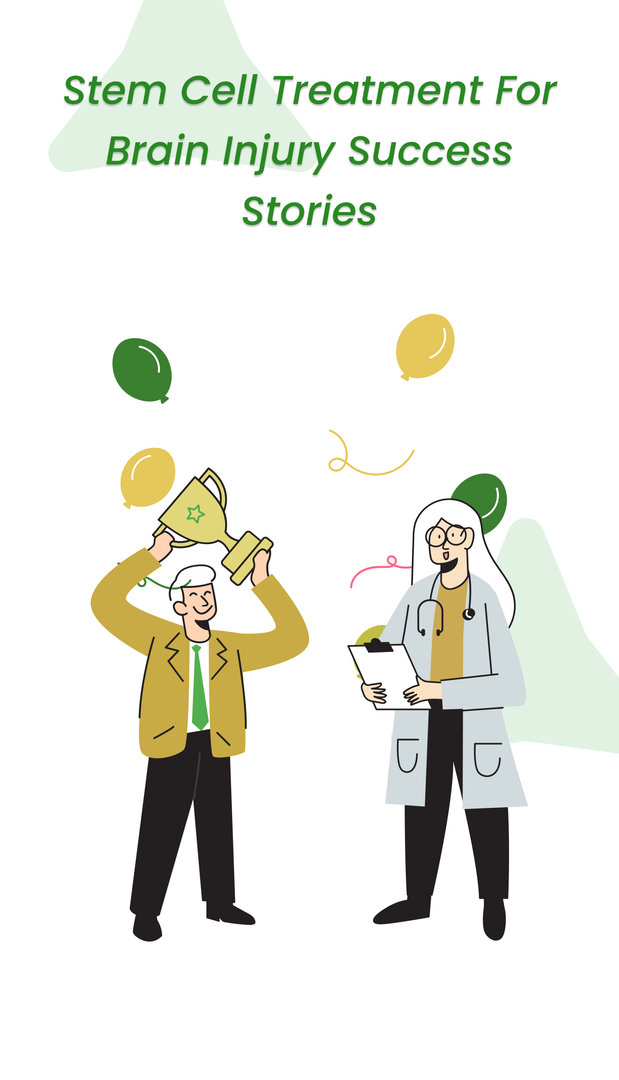
Now that you’ve got a good idea of what stem cell treatment entails, would you like to read about a success story too?
One of the most famous ones is the heartwarming story of Madhumalika from Bangalore. At the age of twenty-seven, she was in a severe car crash that caused a diffuse axonal injury to the brain.
She was operated upon instantly, but doctors believed that even if she survived, she would be in a vegetative state for the rest of her life. It was in this situation that she underwent a stem cell transplant.
Isn’t that amazing?
Stem Cell Research for Brain Injury
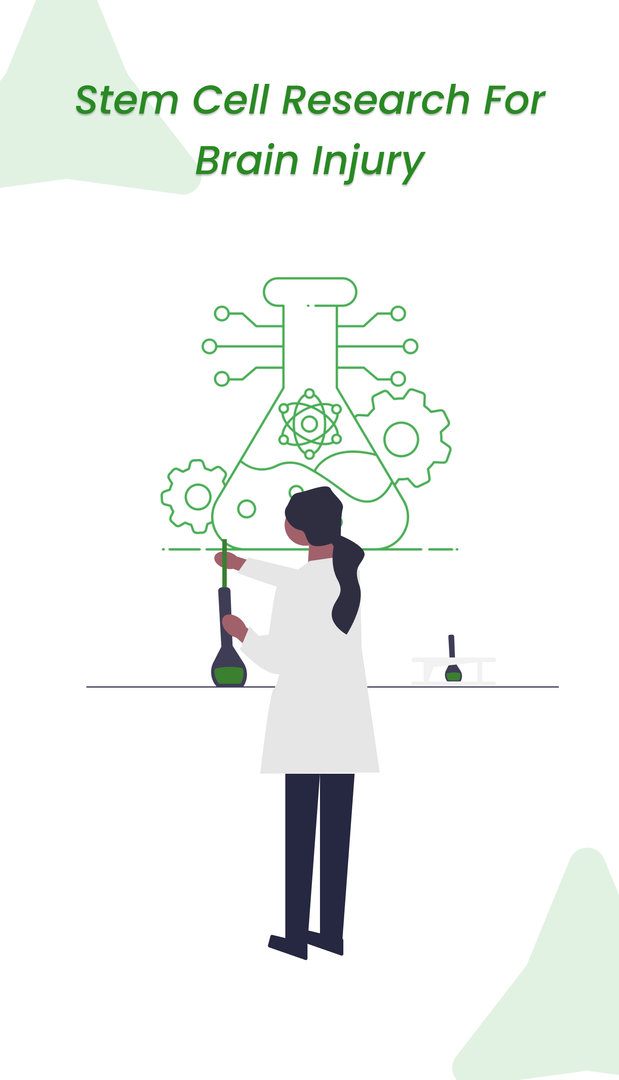
Every study that comes out has consistently pointed to the success of using stem cell transplants for treating brain injuries.
Want to know more?
This study did an overview of several other studies of stem cell transplants for traumatic brain injuries. They reviewed which kinds of stem cells are effective in treating brain injuries and what the future holds for this therapy.
Well, they concluded that the future is bright. Stem cell therapy is certainly a revolutionary treatment that has immense potential.

